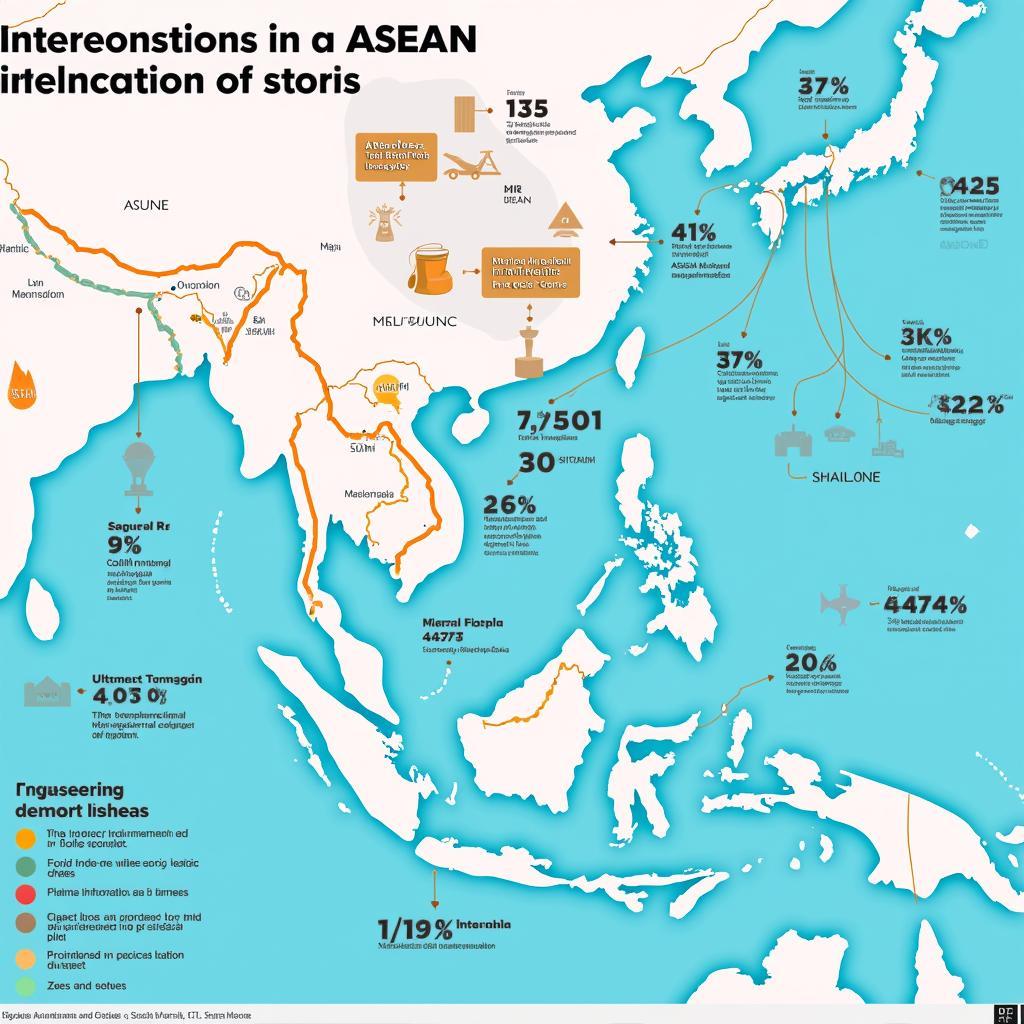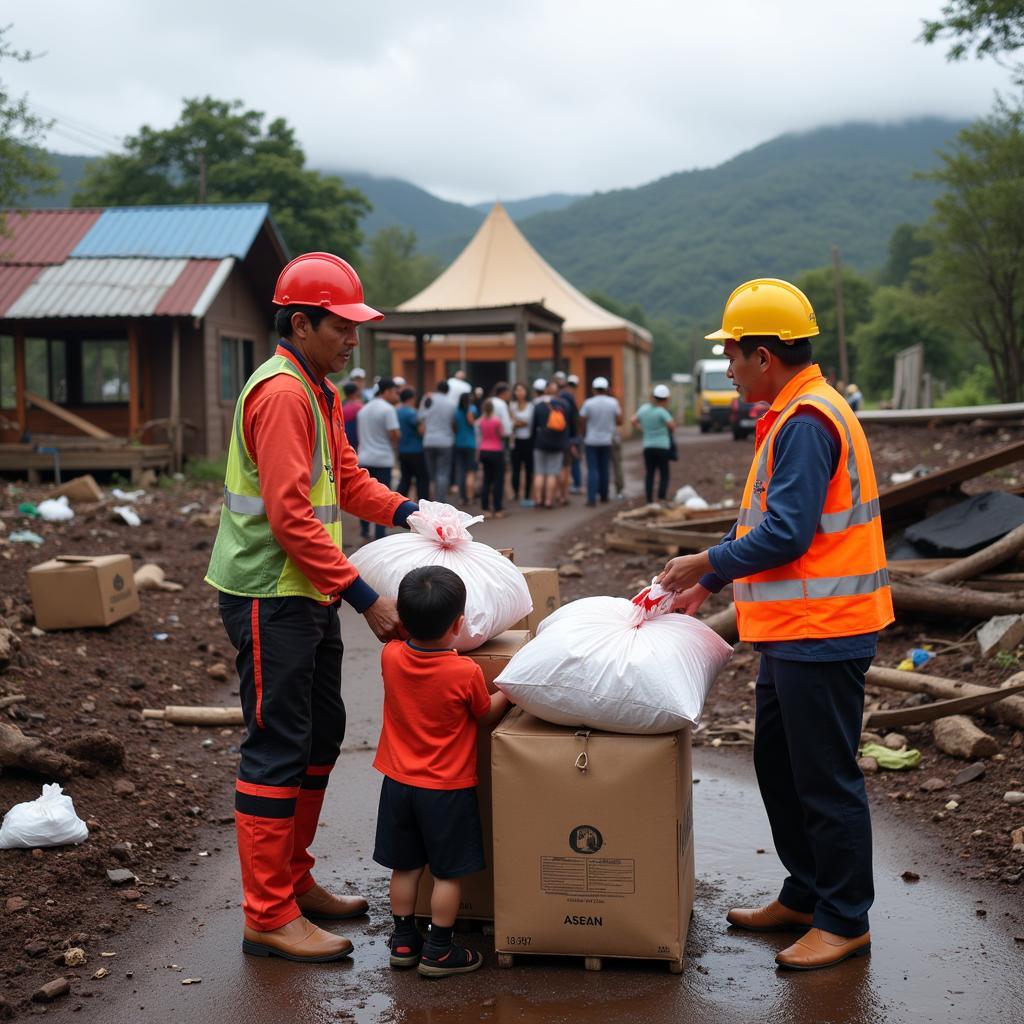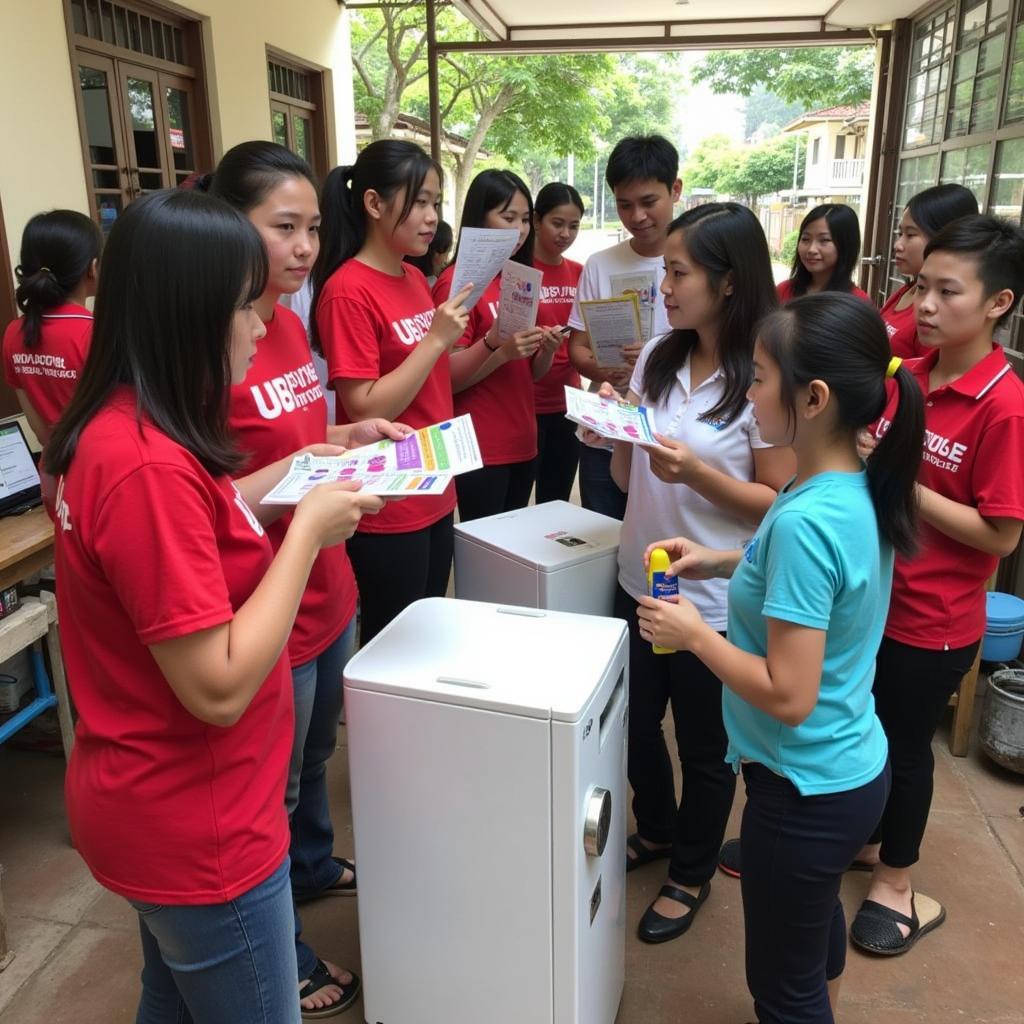The Association of Southeast Asian Nations (ASEAN) stands as a testament to the power of collaboration and shared aspirations. But what exactly is the purpose of ASEAN? This article delves into the core objectives and achievements of this influential regional organization.
The Genesis of ASEAN: From Discord to Dialogue
ASEAN’s roots lie in a tumultuous period marked by Cold War tensions and regional instability. Founded in 1967 by Indonesia, Malaysia, the Philippines, Singapore, and Thailand, the organization emerged from a desire to foster peace and stability in the aftermath of colonialism. The Bangkok Declaration, signed on August 8, 1967, laid the groundwork for a new era of regional cooperation.
Pillars of Progress: ASEAN’s Core Objectives
ASEAN’s purpose is multi-faceted, encompassing a range of political, economic, and socio-cultural goals. The organization’s founding document outlines its key objectives:
- Promoting regional peace and stability: ASEAN seeks to resolve disputes peacefully and prevent conflicts through dialogue and cooperation.
- Accelerating economic growth: The organization aims to facilitate economic integration, promote trade, and attract foreign investment.
- Enhancing social progress: ASEAN strives to improve the quality of life for its citizens through initiatives in education, healthcare, and social welfare.
- Developing ASEAN identity: A key aim is to nurture a sense of shared identity and belonging among the diverse peoples of Southeast Asia.
 ASEAN Economic Integration
ASEAN Economic Integration
ASEAN’s Evolving Role: Adapting to a Dynamic World
Over the decades, ASEAN has evolved to address emerging challenges and seize new opportunities. The organization has played a pivotal role in:
- Managing regional security: ASEAN has established mechanisms for dialogue and cooperation on security issues such as transnational crime, terrorism, and maritime disputes.
- Promoting free trade: The ASEAN Free Trade Area (AFTA) and other agreements have significantly boosted intra-ASEAN trade and investment.
- Responding to natural disasters: ASEAN has developed a coordinated approach to disaster management and humanitarian assistance.
 ASEAN Disaster Response
ASEAN Disaster Response
“ASEAN’s strength lies in its ability to adapt and respond effectively to evolving regional and global dynamics,” notes Dr. Sitiveni Halapua, a prominent scholar of Southeast Asian affairs. “The organization has consistently demonstrated its commitment to dialogue, consensus-building, and collective action.”
ASEAN at 50 and Beyond: Navigating the Future Together
As ASEAN celebrated its 50th anniversary in 2017, the organization reflected on its achievements while looking ahead to future challenges. Key priorities for ASEAN in the 21st century include:
- Narrowing the development gap: ASEAN is working to reduce disparities among its member states and ensure inclusive growth.
- Promoting innovation and digital economy: The organization recognizes the need to harness technology for sustainable development.
- Strengthening ASEAN’s global role: ASEAN seeks to play a more proactive role in shaping the regional and global agenda.
Conclusion: ASEAN – A Beacon of Hope and Cooperation
The purpose of ASEAN extends far beyond mere economic integration. At its heart, ASEAN represents a shared vision of a peaceful, prosperous, and integrated Southeast Asia. As the organization navigates the complexities of the 21st century, its commitment to dialogue, cooperation, and a people-centered approach will continue to guide its journey.
FAQ
1. What are the benefits of being an ASEAN member state?
ASEAN membership offers numerous benefits, including enhanced security, increased trade and investment opportunities, and access to regional development programs.
2. How does ASEAN address human rights issues within its member states?
ASEAN has established human rights mechanisms, such as the ASEAN Intergovernmental Commission on Human Rights (AICHR), to promote and protect human rights in the region.
3. What is ASEAN’s role in addressing climate change?
ASEAN has adopted a regional plan of action on climate change and is actively engaged in international negotiations on climate change mitigation and adaptation.
4. How can I get involved in ASEAN initiatives?
Numerous opportunities exist for individuals and organizations to engage with ASEAN. You can explore the ASEAN website, connect with ASEAN-related organizations, or participate in ASEAN events and programs.
5. What is the future outlook for ASEAN?
ASEAN is poised to play an increasingly important role in shaping the regional and global landscape. The organization’s commitment to cooperation, integration, and a people-centered approach provides a strong foundation for a brighter future for Southeast Asia.
For more information on ASEAN’s purpose and activities, you can explore these related articles:
Need further assistance understanding the intricacies of ASEAN? Don’t hesitate to contact us. Call us at 0369020373, email us at [email protected] or visit our office in Thon Ngoc Lien, Hiep Hoa, Bac Giang, Vietnam. Our dedicated customer support team is available 24/7 to assist you.


